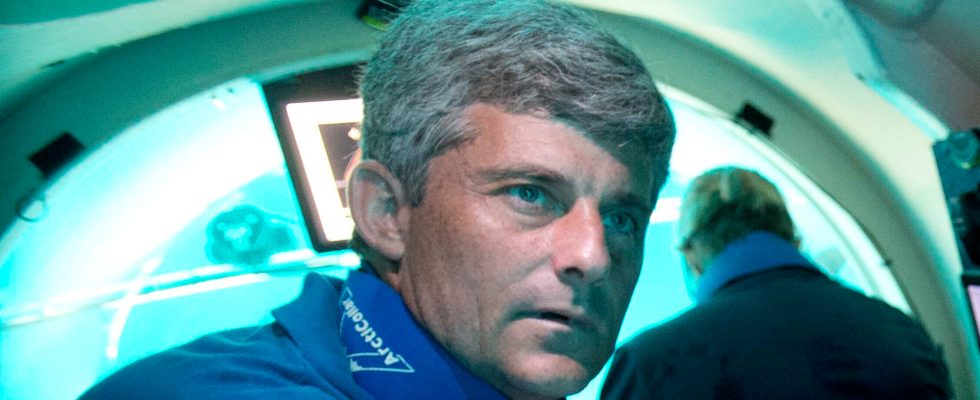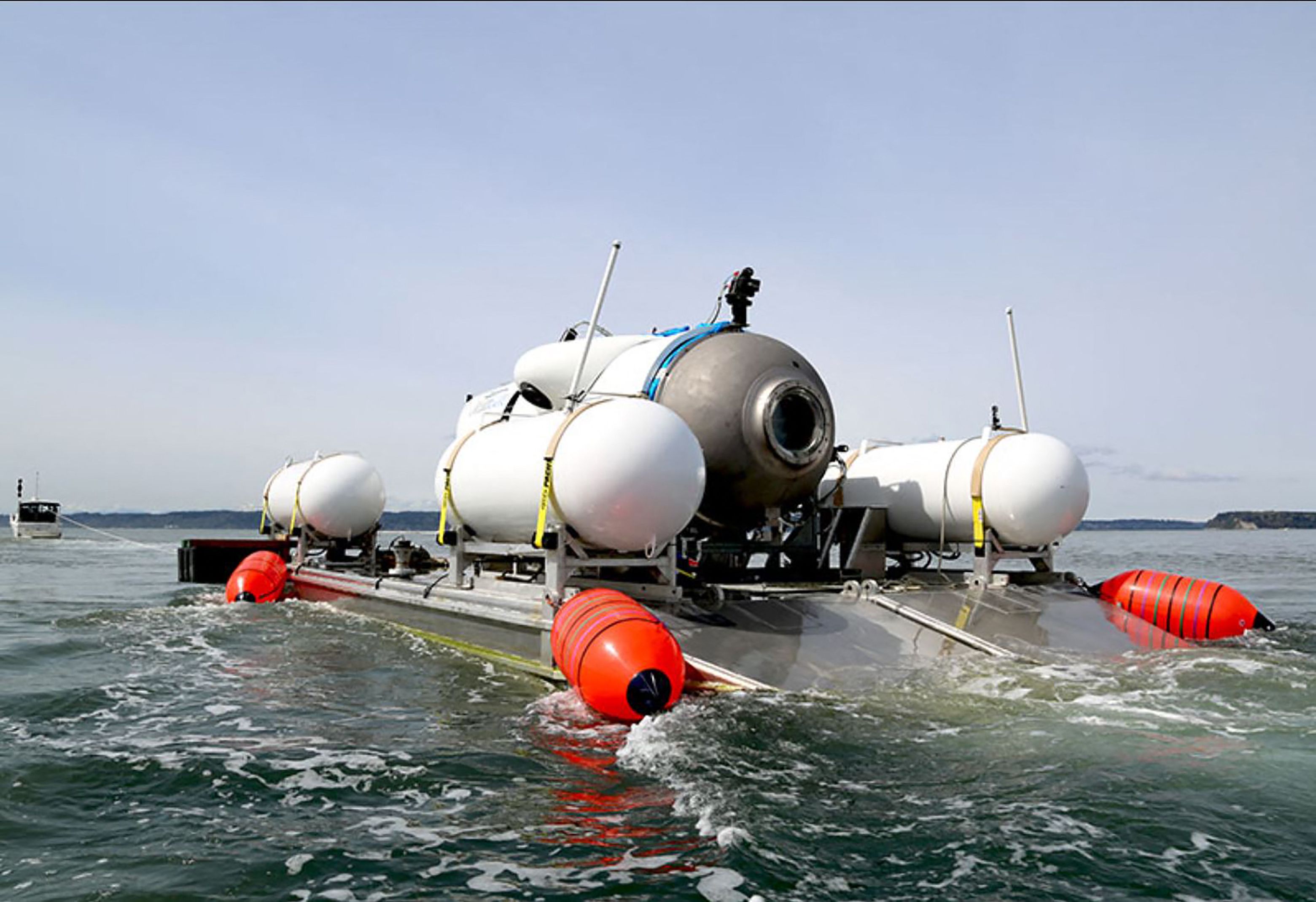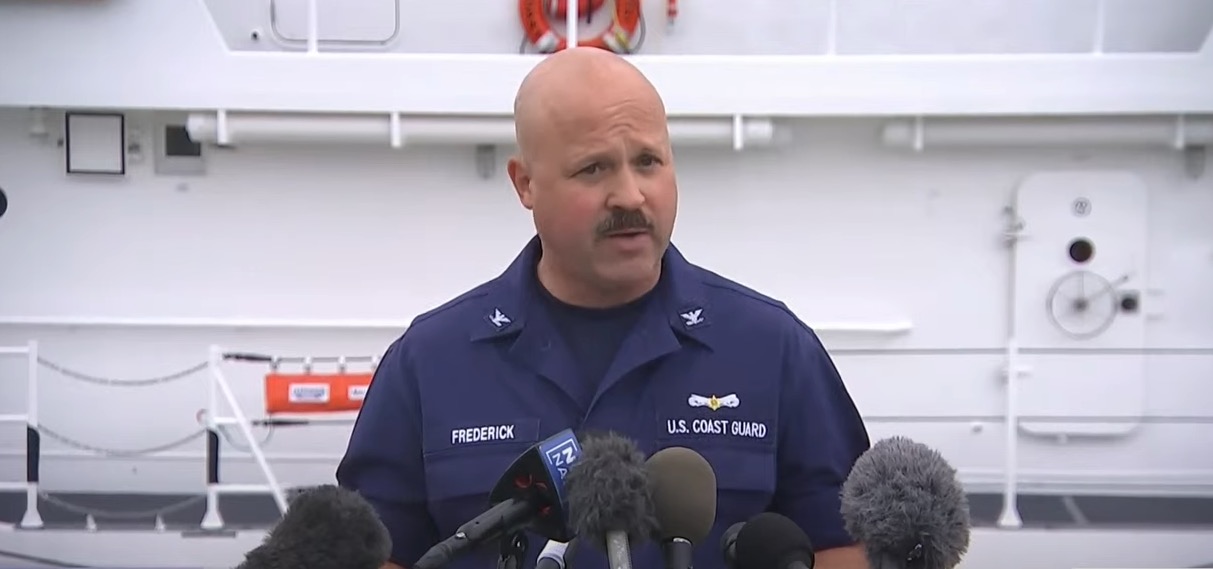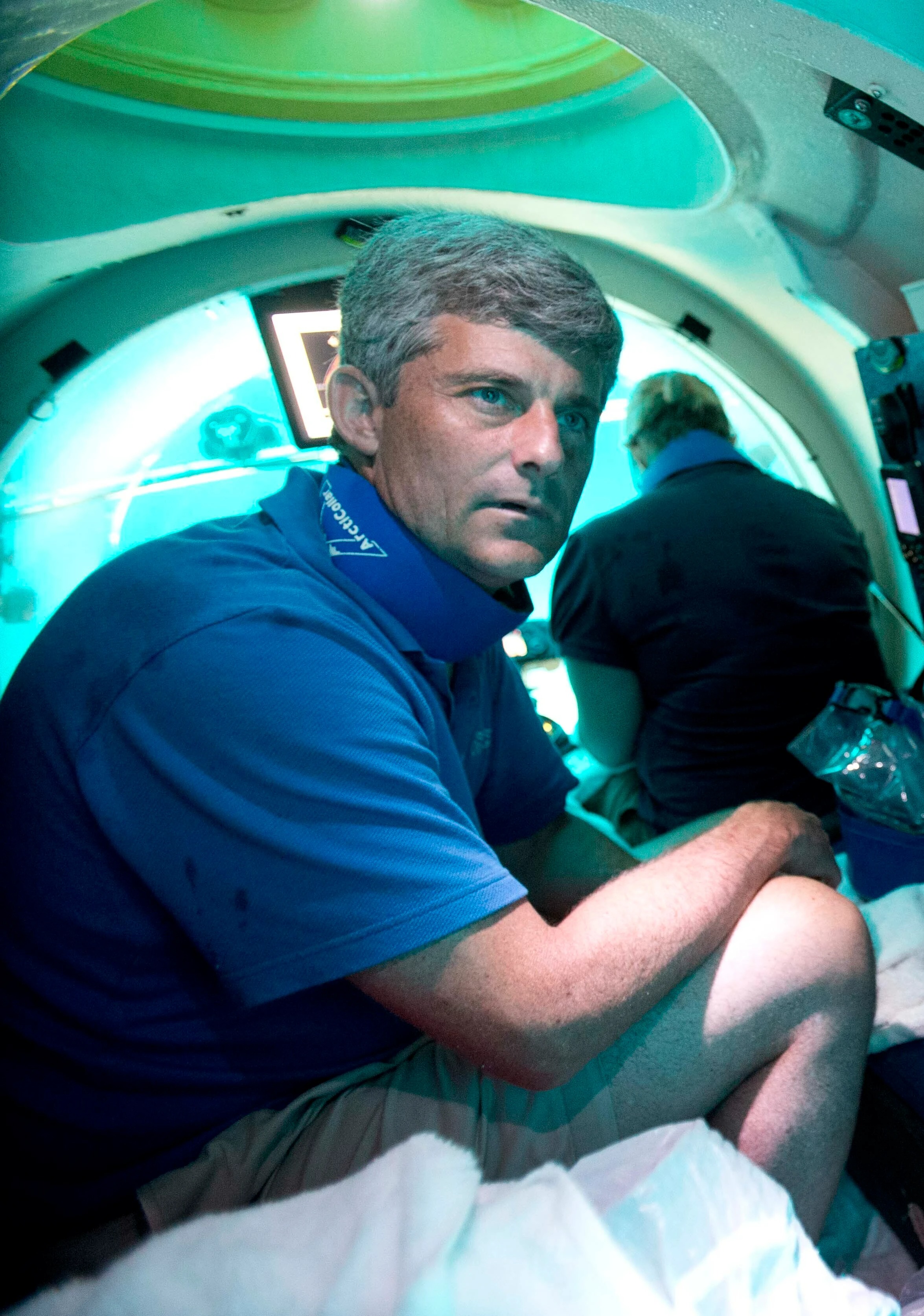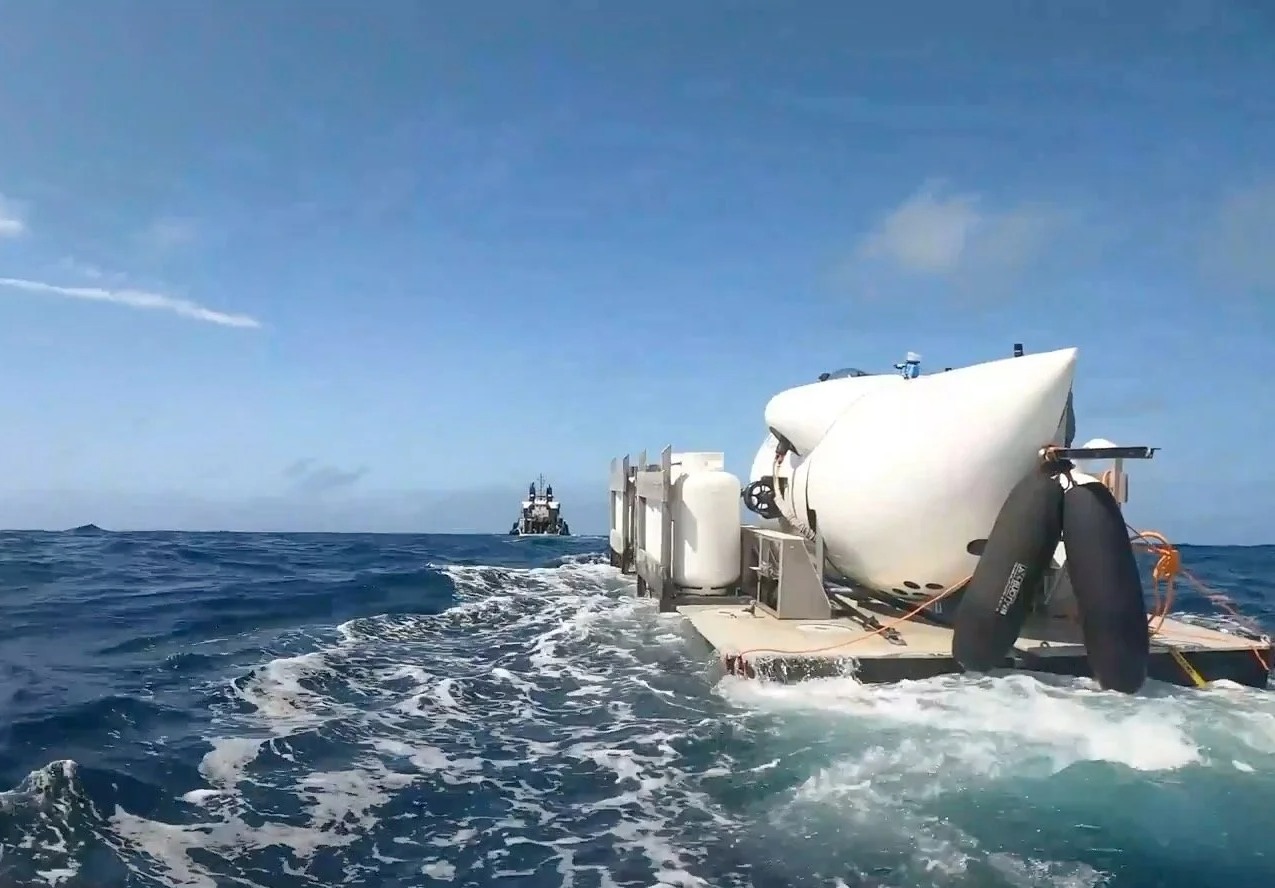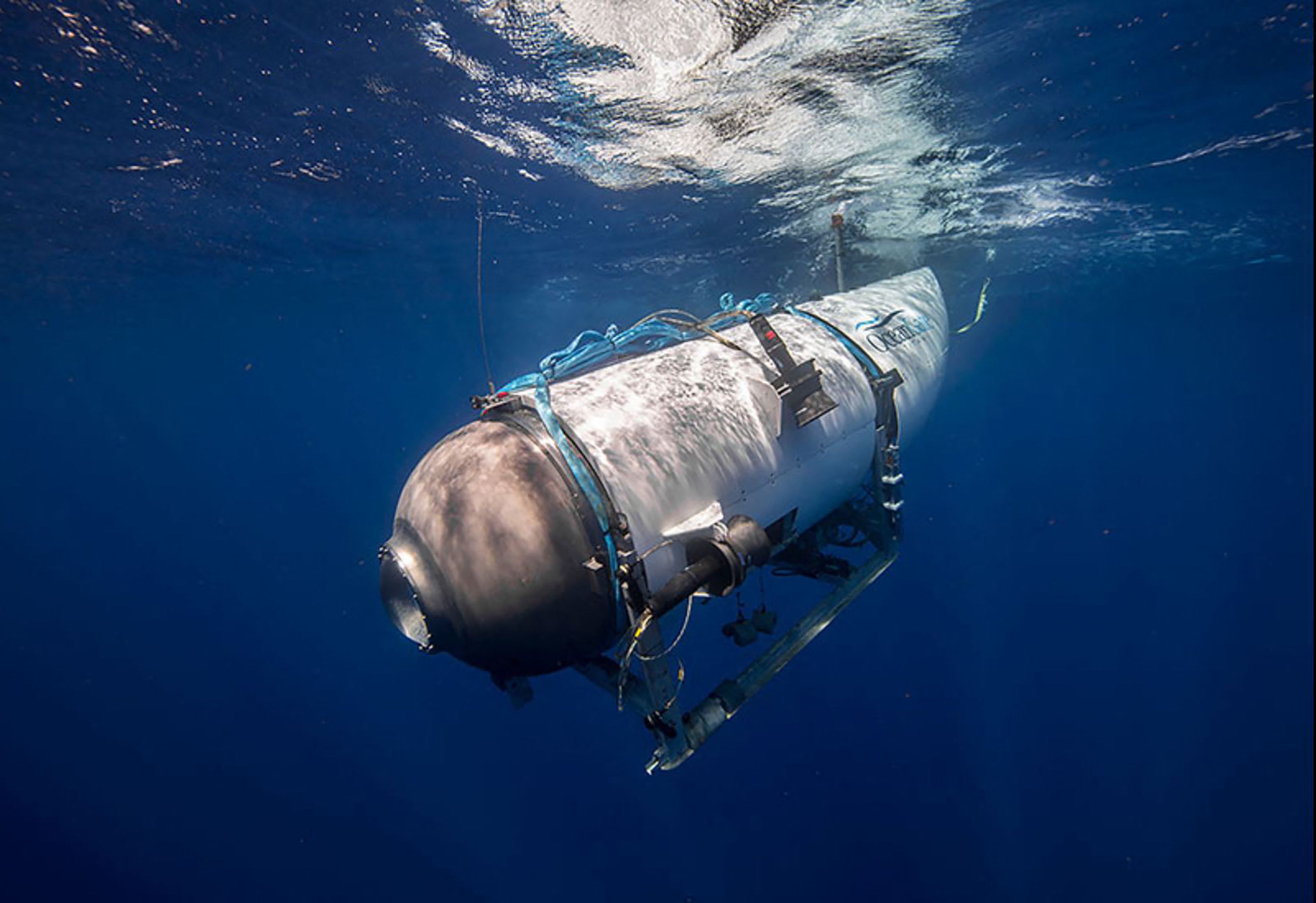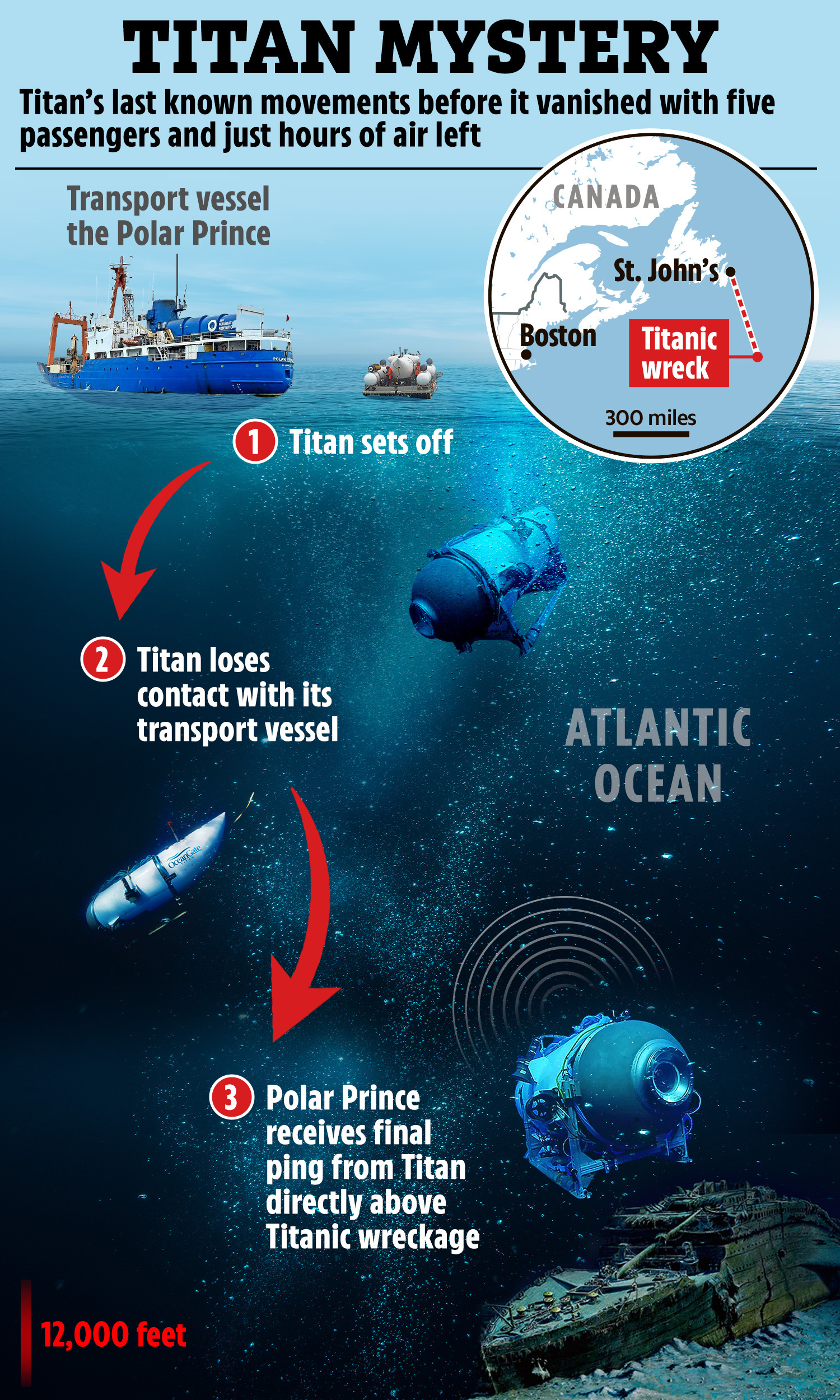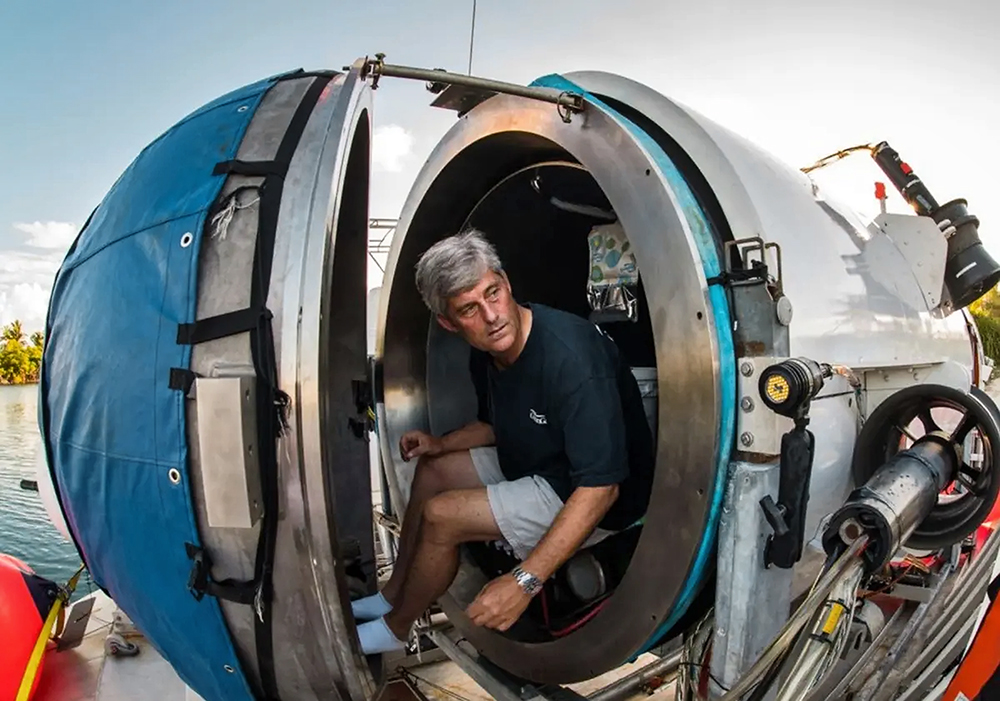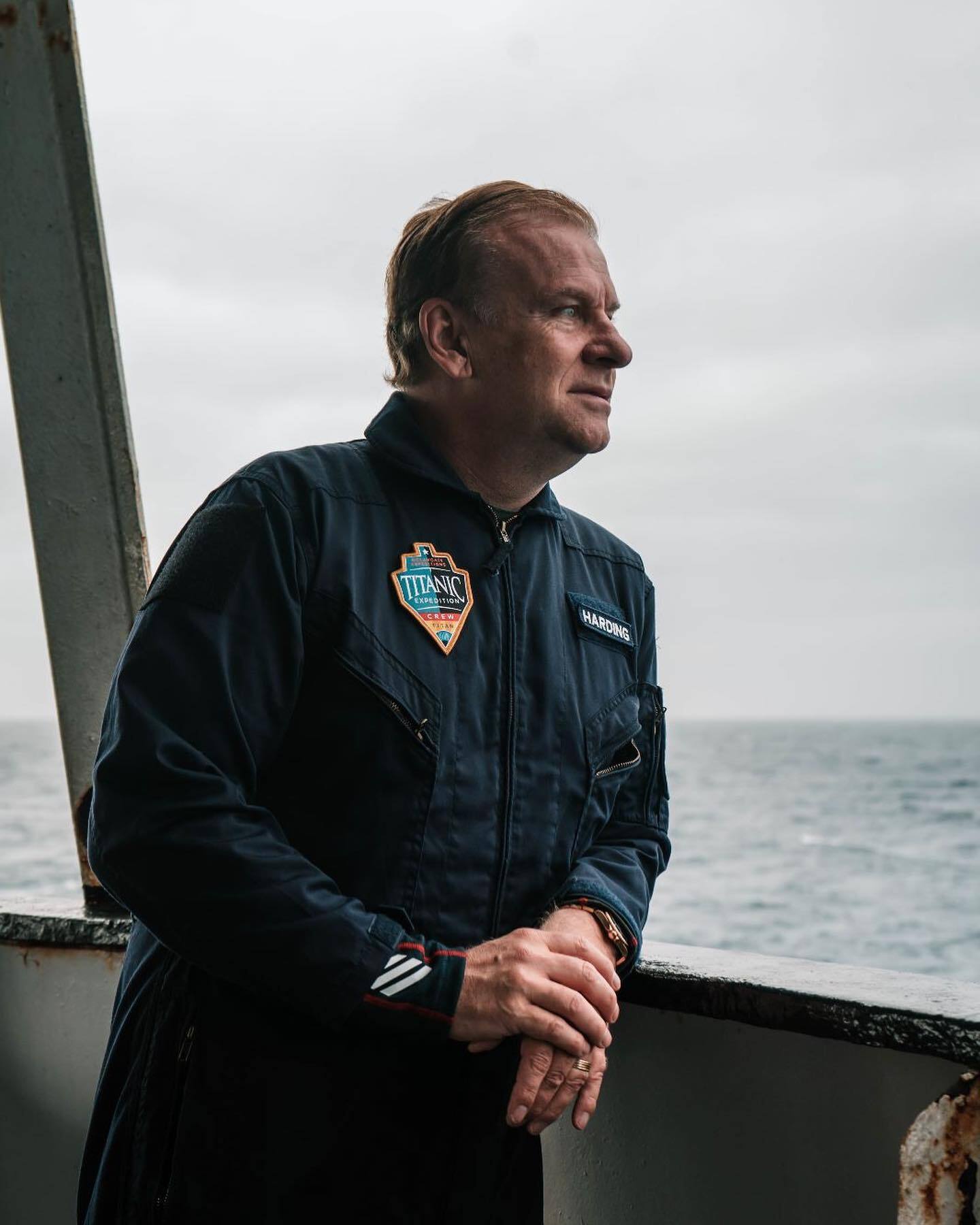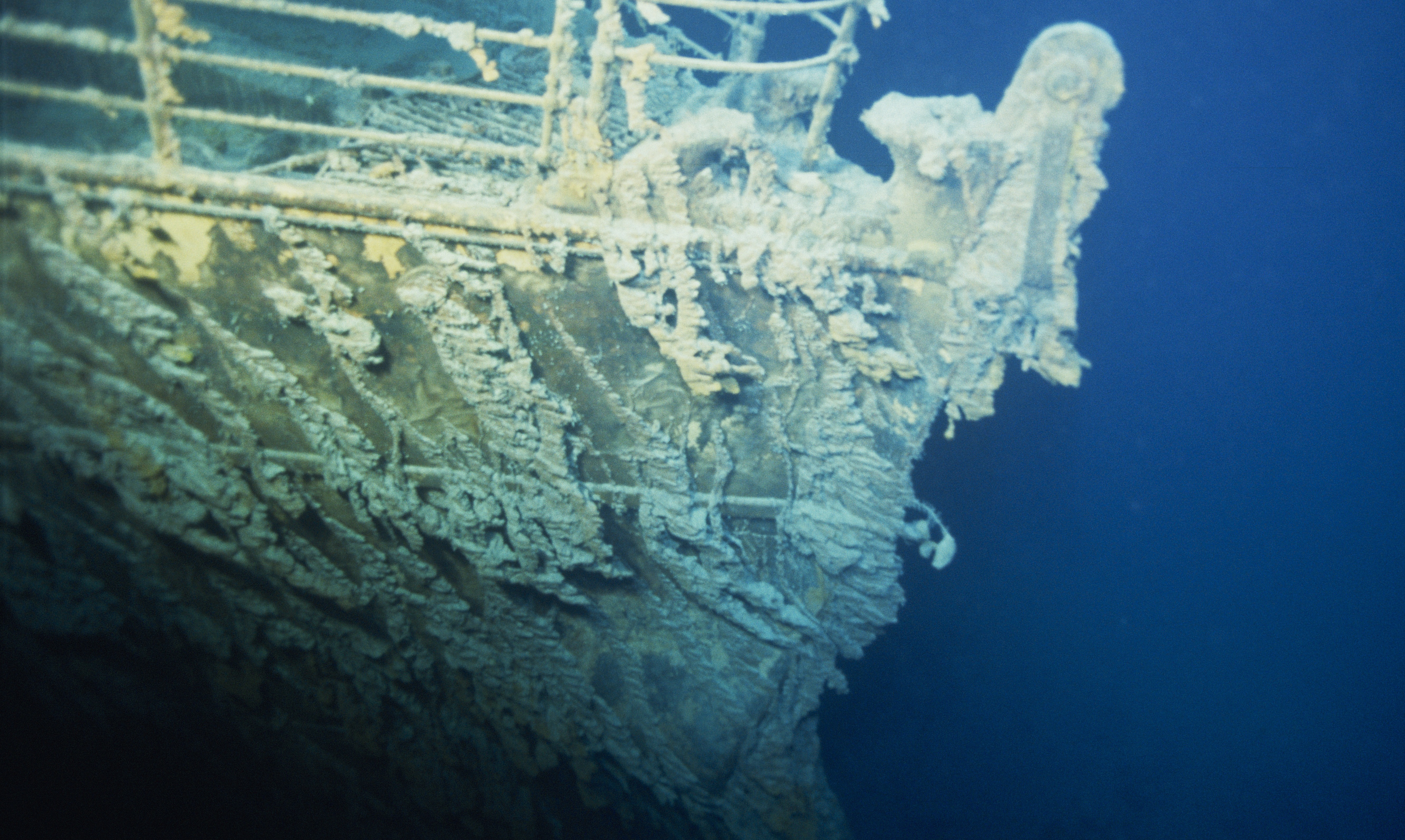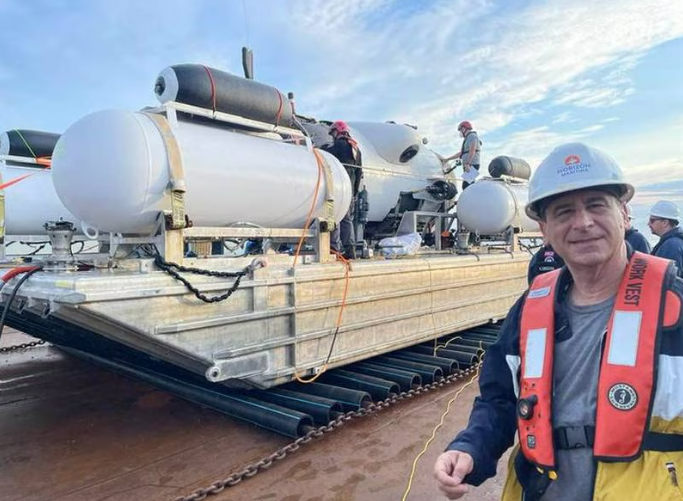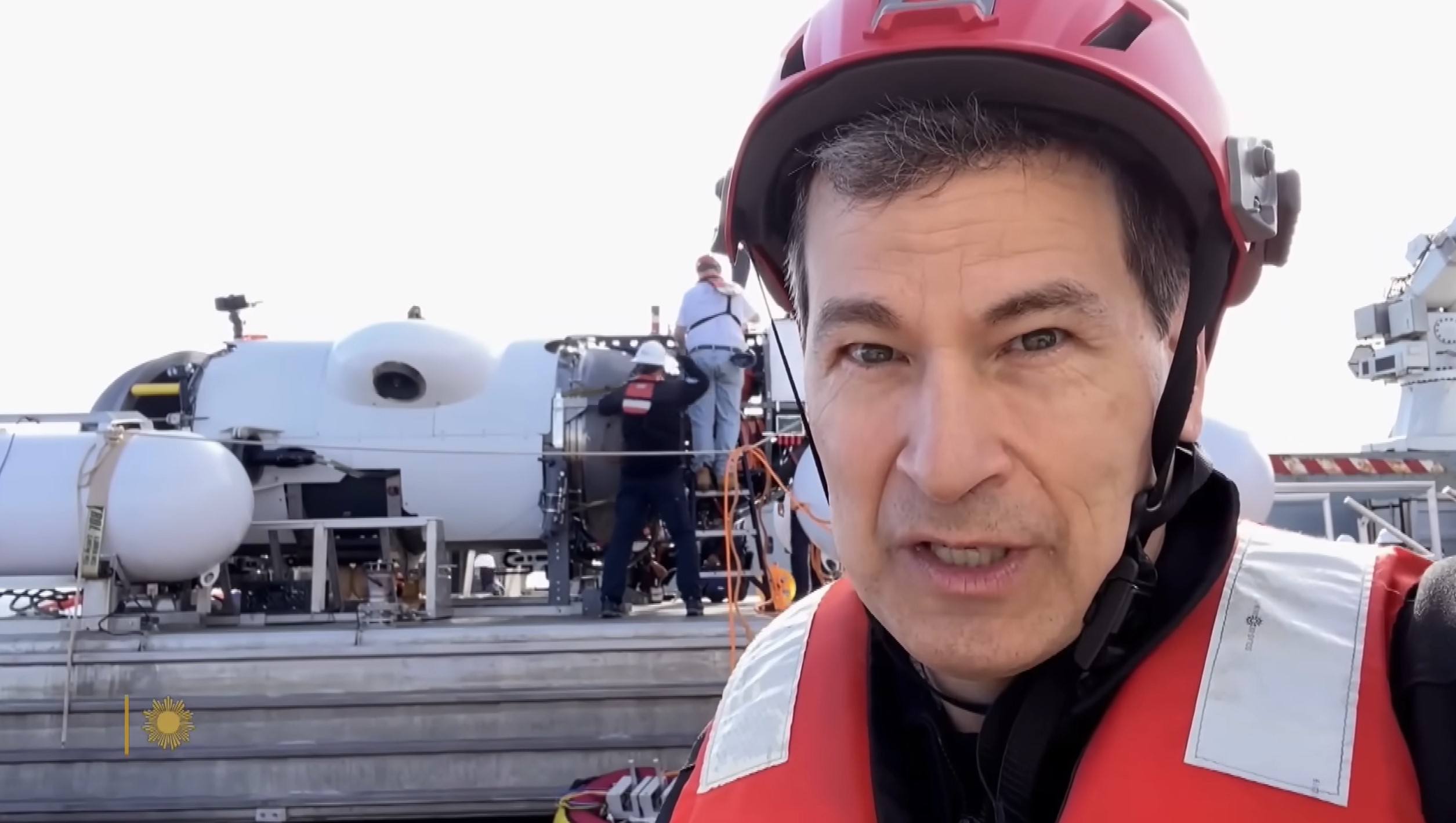THE CEO of a Titanic expedition company who is currently missing aboard a submarine with four others never hid the perils or risks of traveling aboard the deep-sea vessel, two former passengers say.
Stockton Rush, the founder of OceanGate Expeditions, was aboard his company’s Titan submersible that vanished on Sunday morning during an excursion to the wreck of HMS Titanic hundreds of miles off the coast of Newfoundland, Canada.
Three of the other passengers have been identified as British Billionaire Hamish Harding, British-based Pakistani tycoon Shahzada Dawood, and his 19-year-old son Suleman Dawood.
French diving expert Paul-Henry Nargeolet is believed to be the fifth passenger.
The 22-foot-long sub – which will reportedly run out of oxygen by Thursday morning – lost contact with its mother ship at around 9.46am directly above the wreck site of the Titanic. It was reported missing eight hours later.
As a frantic search continues, growing more desperate with each passing hour, two former passengers on the Titan have recounted their experiences diving in the now missing vessel to The U.S. Sun.
Mike Reiss, a writer for The Simpsons, and David Pogue, a reporter for CBS Sunday Morning, both went on separate excursions with OceanGate last year.
Both of the men said they witnessed the vessel experience various communication and navigational issues.
They also said Rush was open and honest about the dangers and potential catastrophes that awaited them beneath the surface of the ocean – however, Rush’s concerns differed greatly from theirs.
“It was always a risk and he never hid that from you,” said Reiss.
“Things go wrong all the time. This is not a rollercoaster, this is not a thrill ride; this is exploration and this is a new kind of exploration.
“To him, it’s like the early days of the space program or the early days of aviation where you’re just kind of making it up as you go along.
“You are part of the initial launch and you’re the test pilots seeing if this thing is going to work.
“The possibility of death and catastrophe just hangs over it, it’s part of what you’re doing and you know that going into it.
“The trip is actually kind of beautiful and more peaceful than you would’ve thought – but you could die at any minute or things could go terribly wrong, and that’s just part of the experience.”
Pogue, meanwhile, said he was so nervous before his expedition that he couldn’t sleep the night before.
As a veteran science reporter, Pogue said he’s partaken in various different adrenaline-fueled adventures – from swimming with sharks to hand-gliding to riding in demolition derby cars – but nothing phased him quite like the prospect of diving in the Titan.
“I kept thinking this could be it,” reflected Pogue.
“Although, I must say the dangers I perceived are not at all the dangers that [Stockton Rush] perceived.
“He told me his greatest worry was one of his customers getting killed on the ship because his ships aren’t passenger vehicles, they are for the petroleum industry – maintenance ships can be very dangerous and that’s what kept him up at night.
“Where I was worried about not getting back to the surface, or about the sub imploding, and so Stockton gave me a tour and showered me that there are seven redundant ways the sub can get itself back to the surface […] so I was greatly reassured that even if all else failed, we would still come back to the surface.”
On his other fear, which concerned the vessel leaking and potentially imploding, Pogue said he was told by Rush the carbon fiber tube actually becomes more water-tight the deeper it descends because the increasing pressure of the water pushes the two titanium caps at each end of the vessel more firmly together.
“The nightmare scenario for him was getting snagged on something, like a finishing net, but there’s nothing else down there but the Titanic,” said Pogue.
“There were [also] some janky aspects to the sub, but Stockton Rush told me those were just the bells and whistles, what you care about is the pressure of the vessel where the people are and he told me, ‘We have that rock solid.'”
‘AN AMERICAN DREAMER’
In separate interviews, both Reiss and Pogue lauded Rush as one of the last great American dreamers and a pioneer of exploration whose love for adventure was as palpable and as it was infectious.
Rush – a Princeton grad, an aerospace engineer, and a former pilot – founded OceanGate Expeditions in 2009.
The company, based in Everett, Washington, has made headlines in recent years for organizing expeditions for paying tourists to travel in submersibles alongside scientists to shipwreck sights, including the Titanic.
The first submersible acquired by OceanGate could travel to a depth of 1,000 feet.
By 2012, the company had a second submersible, Cyclops 1, that could travel up to depths of 1,640 feet.
The Cyclops 1 served as the prototype for the Titan, which can reach staggering depths in excess of 13,000 feet.
OceanGate has been providing tours of the Titanic site since 2021, charging guests up to $250,000 per head to catch a first-hand glimpse of the so-called “unsinkable ship” that sank during a transatlantic voyage in April 1912.
In November last year, Rush described the business to Pogue as “very unusual” and a “new type of travel.”
“We have clients that are Titanic enthusiasts, which we refer to as Titaniacs,” Rush told Rogue of OceanGate’s clientele.
“We’ve had people who have mortgaged their home to come and do the trip. And we have people who don’t think twice about a trip of this cost. We had one gentleman who had won the lottery.”
According to Geekwire, OceanGate had originally planned its first voyage to the Titanic in 2018, but the vessel sustained damage to its electronics from lightning.
Then, in 2019, the voyage was postponed again because of a problem with complying with Canadian maritime law limitations on foreign flag vessels.
Before its first successful trip two years later, the Titan had to be rebuilt after tests showed signs of “cyclic fatigue”.
In 2020, OceanGate announced it was working with NASA to ensure the submersible was strong enough to withstand the 13,000-foot descent to the site of the Titanic.
Rush is one of the last great American dreamers […] I think he’s this very special man with big dreams and you get caught up in his dreams too.
Mike Weiss
According to the company’s website, OceanGate has since successfully completed more than 14 expeditions and more than 200 dives in the Pacific, Atlantic, and the Gulf of Mexico.
However, both Reiss and Pogue said the vessel seemed far from the finished article when they climbed aboard last year.
During each of the three dives he did aboard the Titan, Reiss said the vessel ran into various communication and navigation issues, including getting lost near the bow of the Titanic.
“I’ve taken three different dives with the company and every time communication was an issue,” said Reiss, 63.
“This is a new technology, and they’re very much learning as they go with it but [communication] is probably the weakest link in the chain, and think in two of the three cases when I was there they were able to re-establish communication, but that seems to be the hardest part of this thing.
“We lost communication on the Titanic dive, then we got them back, but it was crackly – almost like something from a World War II movie – and then the problem would be literally communicating with the people on the surface about where we were.
“We were relying on them to guide us to where the Titanic wreck was, but everything they were telling us didn’t correspond to what we were seeing.”
Reiss said the Titan was lost for almost three hours, “blindly searching” for the wreck site 12,500 feet below the surface of the water.
Just 20 minutes before they were due to begin their ascension, Reiss said they “stumbled” upon the bow of the doomed ship, leaving them just enough time to take a few “tourist shots.”
Pogue, meanwhile, witnessed the vessel disappear for more than two-and-a-half hours on the ocean floor.
While Pogue wasn’t in the sub at the time, he explained: “What happened was the sub itself got lost driving around in the dark trying to find the Titanic and they never found it.
“There’s no GPS on the water. Traditional radio doesn’t work underwater. So the surface ship has to look down to see where everything is and relay instructions to the sub pilot.
“As I understand it, the ship has two redundant location systems – GPS systems – and they were giving conflicting information to the sub.
“It was very intense in the control room during that time,” he added.
“It got very quiet […] and much has now been made of the fact that at the time they shut off the ships’ WiFi because the company said it could be an emergency and they needed all channels available.
“But the cynic would say they didn’t want people Tweeting about the disaster that could be unfolding.”
After the mishap, Pogue said there was some discussion about placing some sort of tracking beacon on the Titan to prevent such an error from occurring again.
However, to his knowledge, he said no such safety measure was ever implemented.
“I still don’t know if I dodged a bullet and this thing has been problematic the whole time, or if it’s been perfectly safe the whole time and this is just a freak accident,” said Pogue.
“They treat this thing like a rocket launch […] it seemed like all the boxes had been ticked.
“But so much can go wrong.”
HISTORIC SAFETY CONCERNS
In a report that surfaced in The New Republic late Tuesday, it was revealed that one ex-OceanGate Expeditions employee hired to protect the safety of submersibles and their passengers and crew, years ago claimed that Rush and other company executives ignored warning signs the Titan may be unsafe.
Similar concerns, along with the claim that the company had ignored industry-wide safety standards, were echoed in a letter delivered to the company that same year by the Marine Technology Society, according to The New York Times.
David Lochridge, the former director of marine operations at OceanGate, claimed in the complaint filed in Seattle’s US. District Court that he was fired after questioning the design of the Titan.
He claimed he told Rush and other executives that he disagreed with the company’s choice “to dive the submersible without any non-destructive testing to prove its integrity, and to subject passengers to potential extreme danger in an experimental submersible,” per the documents.
Lochridge claimed the company’s stance could prove a “potential danger to passengers of the Titan as the submersible reached extreme depths,” according to legal documents.
OceanGate officials reportedly told him there was no equipment in existence that could perform such tests.
He also expressed concern that the vessel’s carbon fiber hull could be weakened by the constant pressure exerted at extreme depths, resulting in large tears in the carbon.
Additionally, he claims to have voiced concern the sub’s viewing window was only built to withstand a pressure of 4,265 feet – not the 13,000 feet that Rush and co. intended to reach.
“The viewport manufacturer would only certify to a depth of 1,300 meters due to the experimental design of the viewport,” court papers read.
“Paying passengers would not be aware, and would not be informed, of this experimental design, the lack of non-destructive testing of the hull, or that hazardous flammable materials were being used within the submersible.”
In response, OceanGate pointed out that Lochridge was not an engineer, according to the suit. He then claimed that rather than addressing his concerns, OceanGate fired him.
Lochridge’s lawsuit was filed as a countersuit after OceanGate accused him of fraud, breach of contract, and revealing trade secrets.
Lochridge’s claims were settled out of court in late 2018 and the terms of the settlement were not disclosed publicly.
It’s unclear whether his safety concerns were ever addressed.
TIME RUNNING OUT
OceanGate’s Titan lost contact just 1 hour and 45 minutes into its exploration on Sunday morning.
The final message sent from the vessel placed it directly above the Titanic – which lies at a depth of 12,500 feet around 373 miles off the coast of Newfoundland, Canada.
The U.S. Coast Guard (USCG) is now in a race against time to locate the lost subversive as oxygen supplies inside the carbon-fiber sub dwindle with each passing minute.
During a press conference on Tuesday afternoon at USCG’s Boston headquarters, First District Response Coordinator Capt. Jamie Frederick said officials have already scoured a 7,600 square mile area – which is roughly the size of Connecticut.
Canadian forces and a number of private vessels are also aiding the search.
Even if they’re able to locate the missing vessel before its oxygen supplies run out on Thursday morning, Frederick conceded there was no guarantee that rescuers will be able to bring the sub to the surface.
Both Reiss and Pogue told The U.S. Sun they share a lack of optimism about the chances of safely recovering the vessel.
Channeling his own experience journeying in the Titan, Reiss said he believes those on board will not be panicking but instead be calm and focused – irrespective of the potential peril that lay ahead.
He said: “Having done this and knowing the logistics: this is a tiny vessel in a very big ocean and I think it will be hard to find it.
“And even if it is found, this is a ship that was built to go to places no other ship could, so if they are stuck down there I don’t see a way to reach them or rescue them in time.
“I know it sounds very ominous but I’ve been in that spot, and I have a sense that onboard that ship right now is a sense of calm, maybe focused energy and quiet resignation.
“That’s how I felt. You’re sort of at ease with everything and at peace with the dangers at play.
“I hoping for a happy ending, but I think there’s a strong chance they’ll never be closure on this, because they won’t find the sub and we will never know what happened.
“But this is built into the nature of this thing, of exploration.
“Someday something will go wrong and it’s nobody’s fault. It’s just the nature of the beast.”
Pogue, meanwhile, said he fears the submarine may either have got snagged on something at the wreck site or imploded during its initial descent as he previously feared might happen during his own excursion.
“If they had just lost power, they would’ve just popped right back up to the surface,” he said, “so I cannot think of any good explanation for the signal going dark.
“The nightmare scenario for [Rush] was to get snagged on something […] but honestly, the fact the communication stopped when they were not even at the bottom yet, that suggests to me that the sub may have imploded.
“It’s tragic.”
No traces of the small sub have so far been found as of early Tuesday evening.
Cpt. Frederick told reporters earlier today that crews were “working around the clock” to find the sub, but so far, the search had “not yielded any results”.


